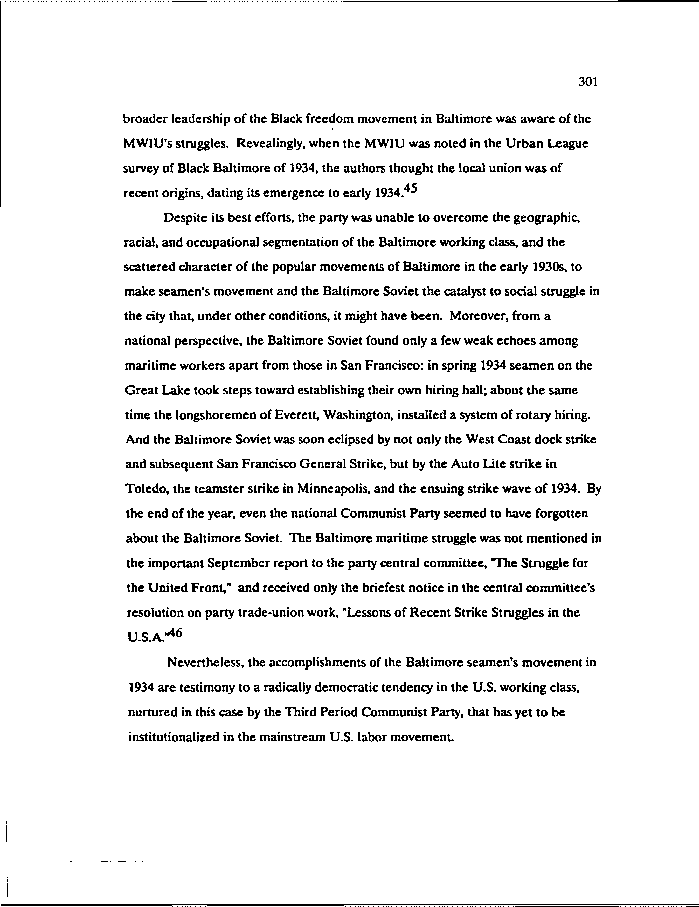|
301
broader leadership of the Black freedom movement in Baltimore was aware of the
MWILJ's struggles. Revealingly, when the MWIU was noted in the Urban League
survey of Black Baltimore of 1934, the authors thought the local union was of
recent origins, dating its emergence to early 1934.^
Despite its best efforts, the party was unable to overcome the geographic,
racial, and occupational segmentation of the Baltimore working class, and the
scattered character of the popular movements of Baltimore in the early 1930s, to
make seamen's movement and the Baltimore Soviet the catalyst to social struggle in
the city that, under other conditions, it might have been. Moreover, from a
national perspective, the Baltimore Soviet found only a few weak echoes among
maritime workers apart from those in San Francisco: in spring 1934 seamen on the
Great Lake took steps toward establishing their own hiring hall; about the same
time the longshoremen of Everett, Washington, installed a system of rotary hiring.
And the Baltimore Soviet was soon eclipsed by not only the West Coast dock strike
and subsequent San Francisco General Strike, but by the Auto Lite strike in
Toledo, the teamster strike in Minneapolis, and the ensuing strike wave of 1934. By
the end of the year, even the national Communist Party seemed to have forgotten
about the Baltimore Soviet. The Baltimore maritime struggle was not mentioned in
the important September report to the party central committee, The Struggle for
the United Front," and received only the briefest notice in the central committee's
resolution on party trade-union work, "Lessons of Recent Strike Struggles in the
U.S.A.*46
Nevertheless, the accomplishments of the Baltimore seamen's movement in
1934 are testimony to a radically democratic tendency in the U.S. working class,
nurtured in this case by the Third Period Communist Party, that has yet to be
institutionalized in the mainstream U.S. labor movement.
|

